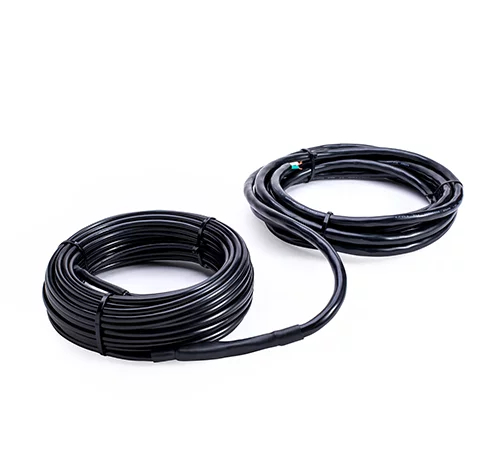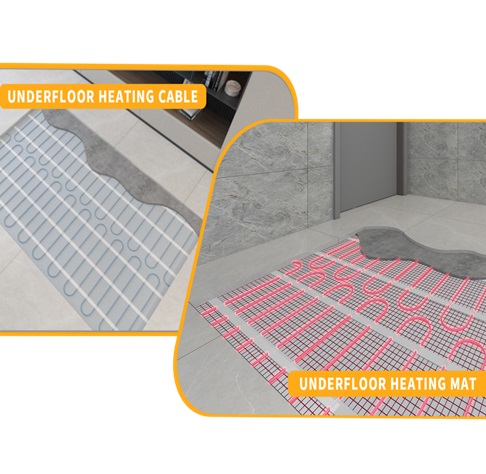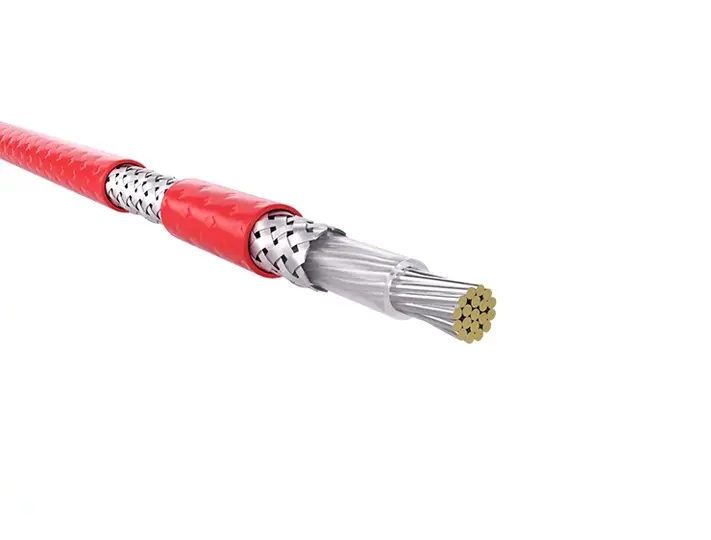The starting temperature of a heating cable depends on its type, thermostat integration, and application. Here's a structured breakdown:
1. Self-Regulating Heating Cables
- Without a Thermostat:
- Begin heating immediately when powered, but their output adjusts based on ambient temperature (higher heat in colder conditions, lower in warmer).
- No fixed "starting temperature"—they are always active but modulate heat output.
- Commonly used for freeze protection (e.g., pipes, roofs) due to inherent safety against overheating.
- With a Thermostat (External or Built-in):
- Activation starts only when ambient temperature drops below the thermostat setting (e.g., 5℃ for pipes).
- Thermostat cuts power entirely above the set temperature, improving energy efficiency.
2. Constant Wattage Heating Cables
- Always Require a Thermostat:
- Produce fixed heat output when powered. Without a thermostat, they risk overheating and damage.
- Starting temperature is determined by the thermostat setting (e.g., 3-5℃ for pipes, 16-18℃ for underfloor heating).
- Often used in residential/commercial heating systems where precise temperature control is needed.
3. Line Voltage vs. Low Voltage Cables
- Line Voltage (120V/240V):
- Directly connected to mains power. Starting temperature depends on thermostat settings.
- Example: Underfloor heating systems activated at 16-18℃ via a thermostat.
- Low Voltage (12V/24V):
-Require a transformer. Activation is still governed by thermostat settings, often used in smaller applications like gutter heating.
4. Built-In Thermostat Cables
- Pre-Set Activation:
- Designed for specific applications (e.g., pipe heating cables with fixed activation at 5℃).
- No external controls needed; ideal for simple installations.
Key Applications & Settings
- Freeze Protection (Pipes/Roofs): Typically activates at 3-5℃.
- Underfloor Heating: Starts at 16-18℃ for comfort.
- Industrial Processes: Custom settings based on material requirements.
Safety Notes
- Self-Regulating Heating Cables: Safer for continuous use without a thermostat due to inherent temperature response.
- Constant Wattage Heating Cables: Always pair with a thermostat to prevent overheating.
- Thermostat Types: Use weatherproof, application-specific thermostats (e.g., pipe sensors for outdoor use).
By understanding these factors, you can select the appropriate cable and thermostat combination for efficient and safe operation.


![3.7w/ft Floor Heating Cable [Uncoupling Membrane] 3.7w/ft Floor Heating Cable [Uncoupling Membrane]](/uploads/file/20240903/16/floor-heating-cable-uncoupling-membrane.webp)




